Table of Contents
The Jordanian flag, also known as the flag of Jordan, holds a significant place in the nation’s history and culture. With its vibrant colors and meaningful symbolism, it represents the Jordanian identity and heritage. In this article, we will delve into the intriguing aspects of the Jordan flag, its design, historical background, and the symbolism behind its elements.
The Jordan flag features three horizontal bands in black, white, and green from top to bottom, with a red chevron on the hoist side bearing a white star. The black color symbolizes the Arab Abbasid dynasty, the white represents the Umayyad dynasty, and the green stands for the Fatimid dynasty. The red chevron is said to represent the Hashemite dynasty and the Arab Revolt, while the white star stands for the unity of the Arab people.
Jordan Flag: Colors and Symbolism
- The flag of Jordan has three horizontal bands in black, white, and green with a red chevron on the hoist side featuring a white star.
- The black color symbolizes the Arab Abbasid dynasty, which played a significant role in the region’s history.
- The white represents the Umayyad dynasty, recalling a prosperous era in Arab history.
- The green color stands for the Fatimid dynasty, another influential period.
- The red chevron symbolizes the Hashemite dynasty and the great Arab Revolt.
- The white star represents the unity and aspirations of the Arab people.
- The flag’s design reflects the nation’s aspirations, cultural heritage, and unity among the Jordanian people.
Flag of Jordan
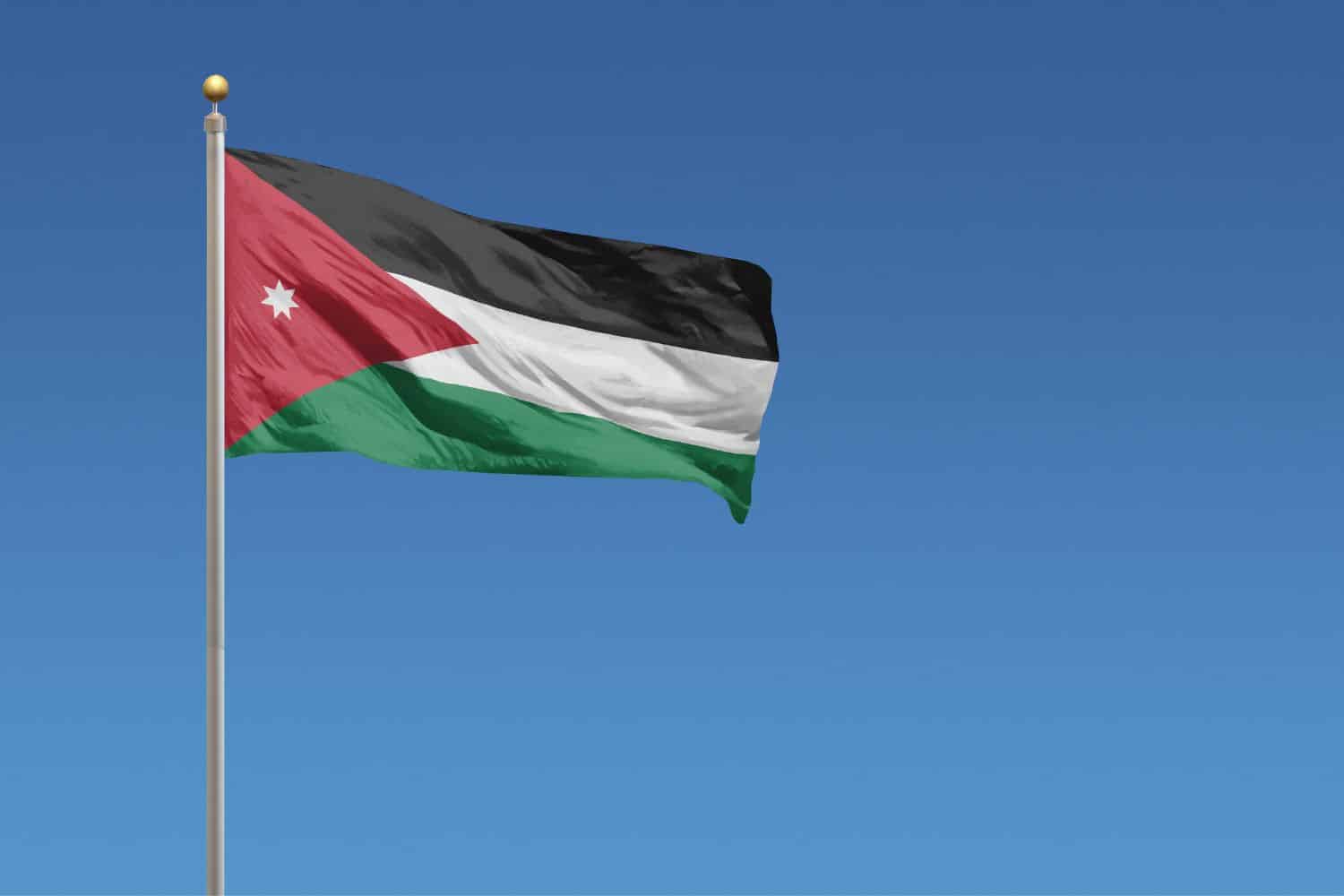
The flag stands as a powerful symbol that encapsulates the cultural significance and spirit of the nation. Its design consists of three horizontal bands (black, white, and green) with a red chevron containing a white star on the hoist side. The black band represents the Arab Revolt, the white symbolizes the Umayyad Caliphate, the green stands for the Fatimid Caliphate, and the red chevron is for the Hashemite dynasty. The white star in the red chevron is the seven-pointed star, which signifies the unity of the Arab peoples.
The history of the flag is intertwined with Jordan’s rich heritage and its link to the Arab Revolt. Adopted on April 16, 1928, the flag represents the unity and aspirations of the Jordanian people.
Beyond its aesthetics, the flag from Jordan carries deep symbolic meanings. The colors reflect the values and aspirations of the Jordanian people, symbolizing their historical links to various Arab dynasties and the unity of the Arab peoples. The seven-pointed star has its significance, representing the unity of the Arab nations. It embodies Jordan’s cultural heritage and serves as a reminder of the nation’s resilience and unity.
National Flag Etiquette and Protocol

Respecting the proper usage and display of the Jordanian flag is of utmost importance. Understanding flag etiquette is essential, especially during national events and ceremonies. Learn about the protocols governing the handling, hoisting, and lowering of the flag. Discover the appropriate procedures for retiring or handling damaged flags, ensuring they are accorded the respect they deserve.
- Proper Handling: The Jordanian flag should be handled with care and respect, ensuring it is not allowed to touch the ground or floor. It should be held upright and not dragged.
- Hoisting and Lowering: When hoisting the flag, it should be raised briskly and lowered ceremoniously. It is customary to hoist the flag at sunrise and lower it at sunset, although this may vary depending on the occasion or specific guidelines.
- Displaying the Flag: The Jordanian flag should be displayed with the black, white, and green horizontal bands in that order from top to bottom with the red chevron at the hoist side. It should be flown freely and not entangled or obstructed.
- Half-Staff: Lowering the flag to half-staff is a gesture of mourning or respect. This should be done on specific days of remembrance or when directed by authorities to honor national tragedies or the passing of significant figures.
- Flag Retirement: When a Jordanian flag becomes damaged, torn, or worn out, it should be retired in a dignified manner. This can involve burning it in a respectful and solemn ceremony, following appropriate guidelines and local regulations.
- Flag Size and Placement: The size of the Jordanian flag displayed should be proportionate to the size of the flagpole or display area. It is recommended to consult local guidelines or authorities for specific rules regarding flag size and placement.
- Respectful Disposal: If a flag cannot be retired through burning, it should be disposed of in a respectful manner. This can involve burying it or handing it over to authorized organizations that specialize in flag disposal.
Interesting Facts and Trivia
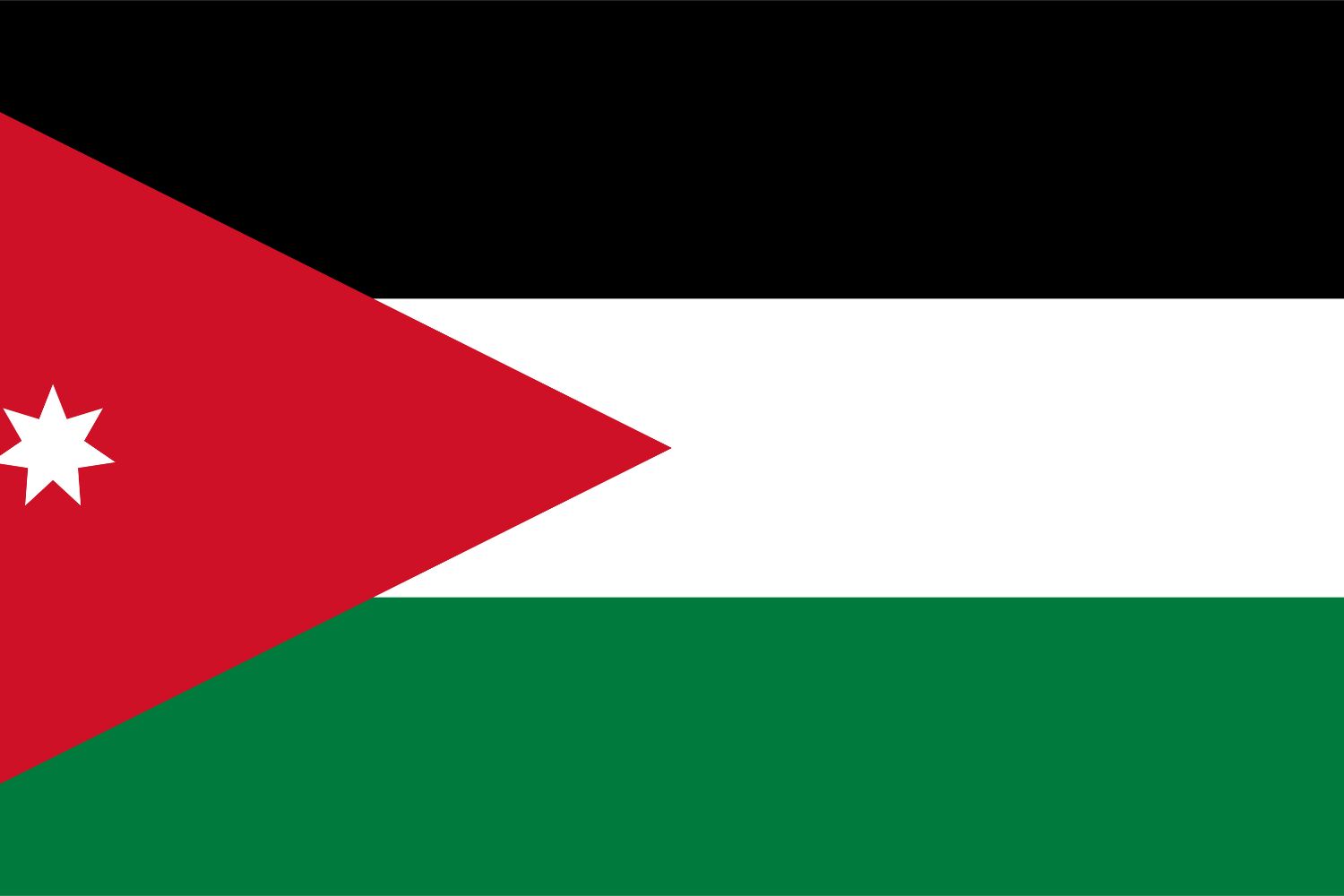
Embark on a journey of fascinating facts and lesser-known trivia about the Jordanian flag. Discover unique features within the flag’s design that hold hidden symbolism. Uncover stories of famous incidents or events involving the flag that have left an indelible mark on the nation’s history and identity.
Rich Tapestry of History
- 1928: The current flag of Jordan is adopted, symbolizing the unity and aspirations of the Jordanian people.
- Colors and Symbolism: The black, white, and green horizontal stripes represent the Abbasid, Umayyad, and Fatimid Caliphates respectively. The red triangle stands for the Hashemite dynasty and the Arab Revolt.
- Seven-Pointed Star: The star at the center of the flag, found within the red triangle, symbolizes the seven verses of Al-Fatiha, the first chapter of the Quran, and also reflects the unity of the Arab people.
- National Identity: The flag embodies Jordan’s rich history, cultural heritage, and the nation’s ongoing pursuit of unity, prosperity, and renewal.
These historical facts highlight significant moments in the history of the Jordanian flag, showcasing its role in shaping Jordan’s national identity and symbolizing its struggles and aspirations throughout the years.
Flag-Related Symbols and Emblems
A flag is not alone in representing the nation’s identity. Explore additional national symbols and emblems closely associated with Jordan, understanding their significance and how they relate to the flag. Delve into their historical and cultural roots, further enriching your understanding of Jordan’s heritage. It’s easy to travel and make a Jordan tour to visit the country’s best destinations.
Symbolisms of the Jordanian Flag
The flag of Jordan holds several symbolic elements that represent the nation’s history, values, and aspirations. Here are the symbolisms of the Jordan flag presented in itemized form:
- Red Color: Represents bravery, valor, and the sacrifices made by the Jordanian people throughout history.
- Green Color: Symbolizes hope, renewal, and the fertile landscapes of Jordan.
- Five-Pointed Star: Represents the Seal of Solomon, holding historical and cultural significance in Jordanian tradition and symbolizing unity and tradition.
- Flag’s Design: Reflects Jordan’s aspirations, cultural heritage, and unity among the Jordanian people.
- National Identity: The flag serves as a powerful symbol that unifies the Jordanian people, reminding them of their shared heritage and cultural identity.
- National Aspirations: Through its design and elements, the flag embodies the aspirations and values of the Jordanian nation, including bravery, hope, unity, and tradition.
These symbolisms in the flag contribute to the country’s sense of identity and pride, reflecting its historical journey and cultural significance.
Flags of Similar Countries or Regions
Examining the flags of neighboring countries or regions can provide intriguing insights. Compare and contrast the flags, exploring similarities in design, colors, or symbolism. Uncover historical and cultural connections between flags, shedding light on shared influences or distinctive identities.
Jordanian Flag vs Palestinian Flag
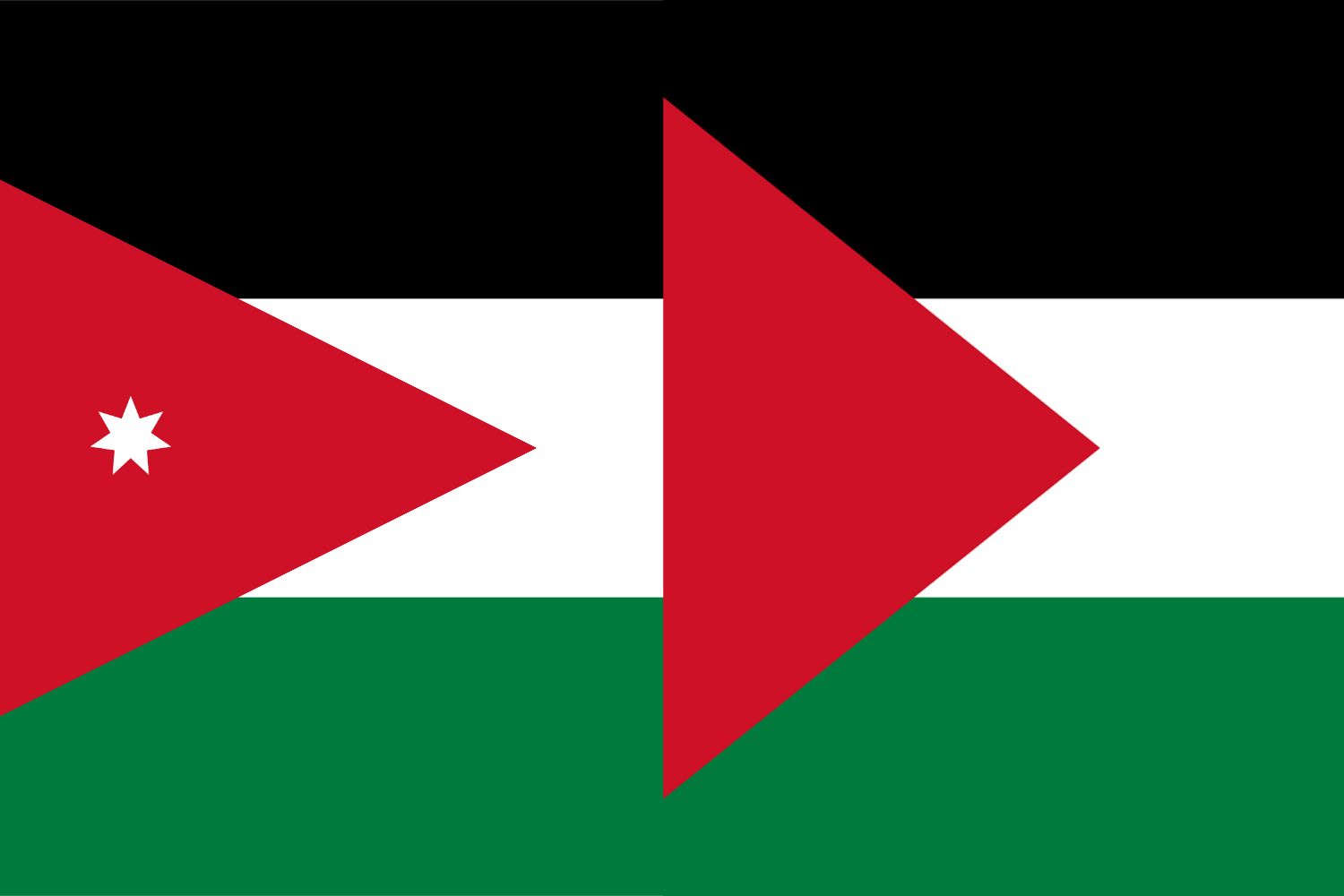
Similarity: Both flags feature a horizontal stripe design.
Difference: The Palestinian flag includes a black, white, and green tricolor with a red triangle on the hoist side containing a white seven-pointed star.
Jordanian Flag vs Iraqi Flag
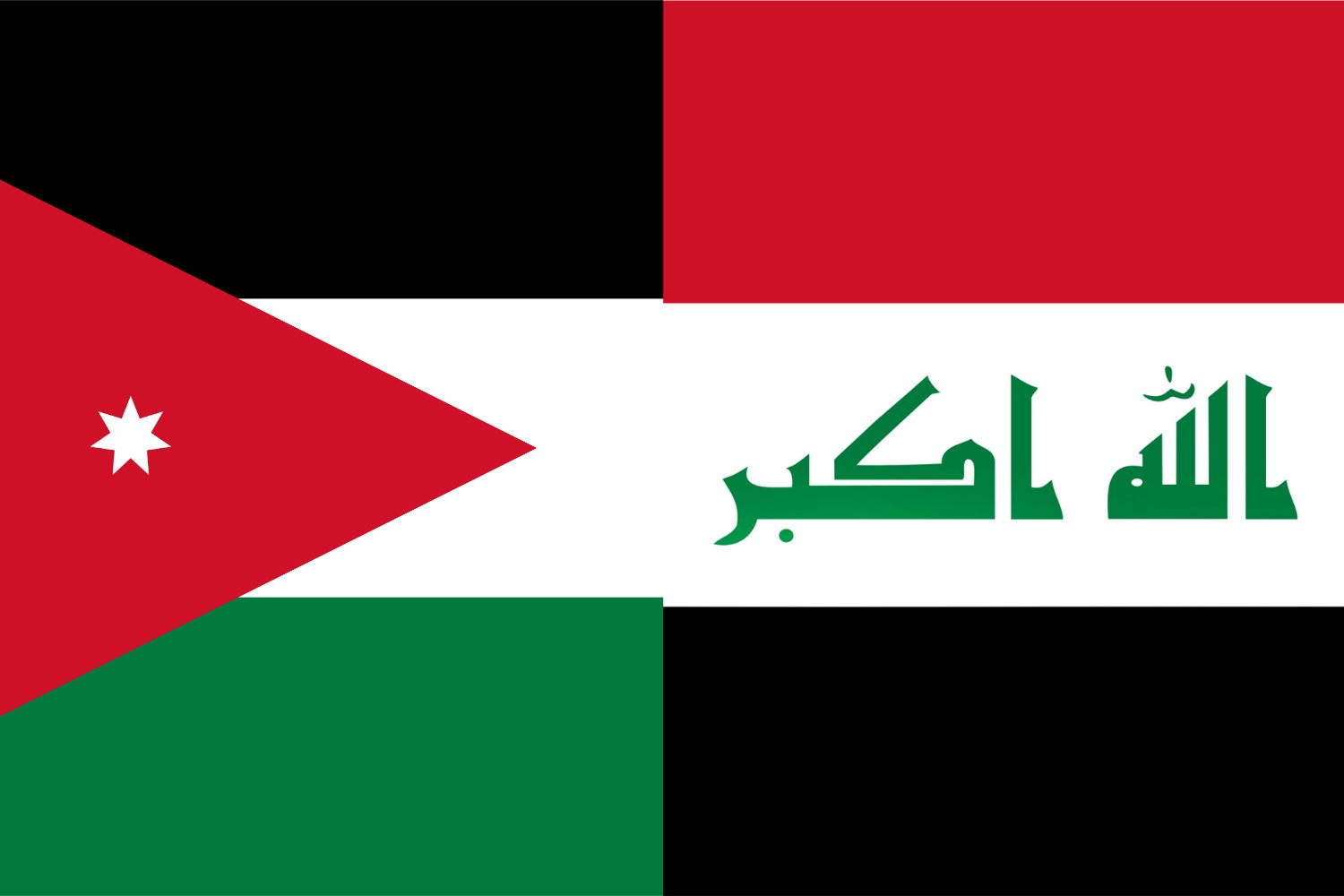
Similarity: Both flags have black, white, and green horizontal stripes.
Difference: The Iraqi flag includes the Takbir (Arabic for “God is the Greatest”) written in Kufic script, while the Jordanian flag has a red triangle on the hoist side containing a white seven-pointed star.
Jordanian Flag vs Syrian Flag
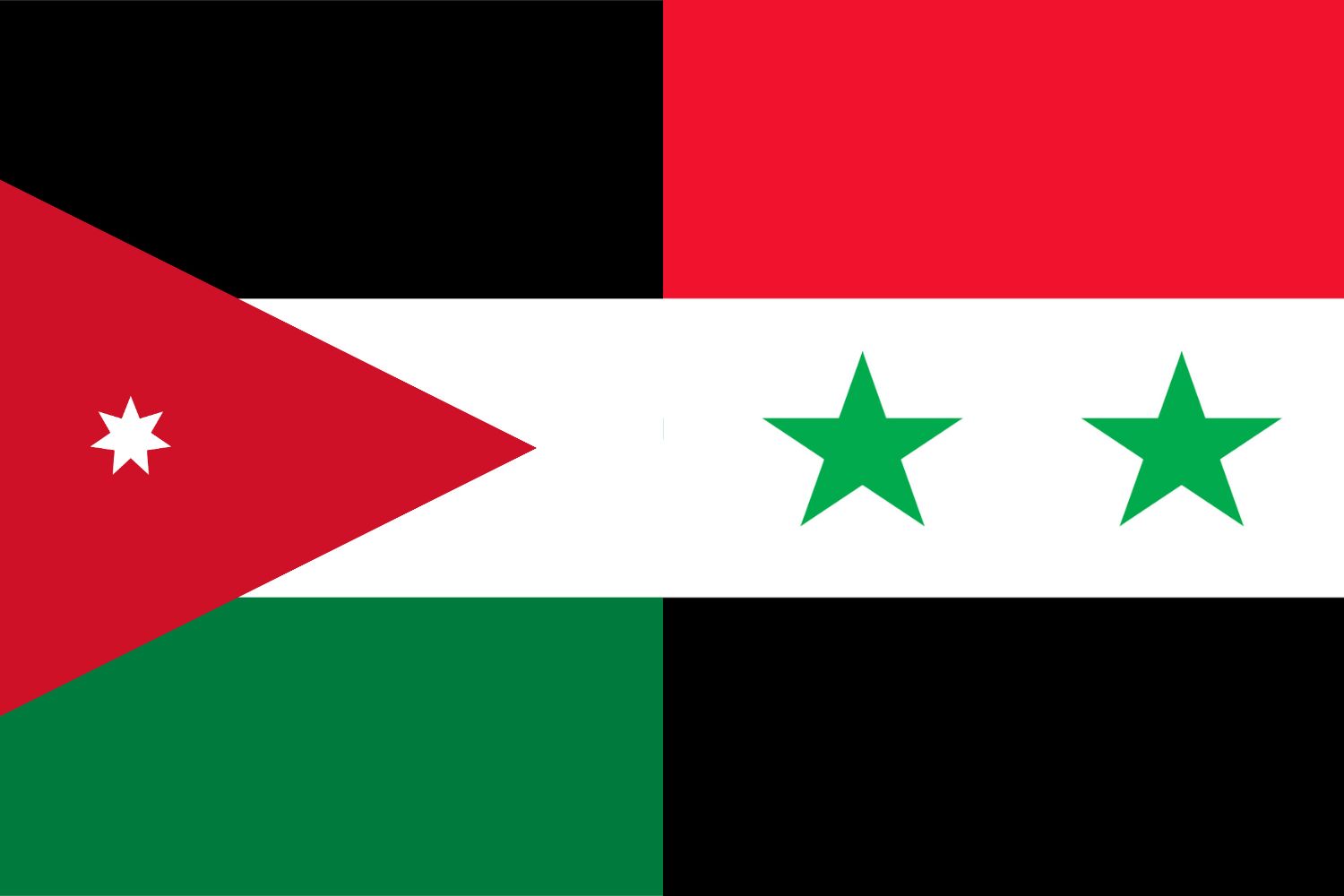
Similarity: Both flags have black, white, and red horizontal stripes.
Difference: The Syrian flag includes two green stars in the white stripe, while the Jordanian flag has a red triangle on the hoist side containing a white seven-pointed star.
Jordanian Flag vs Kuwaiti Flag
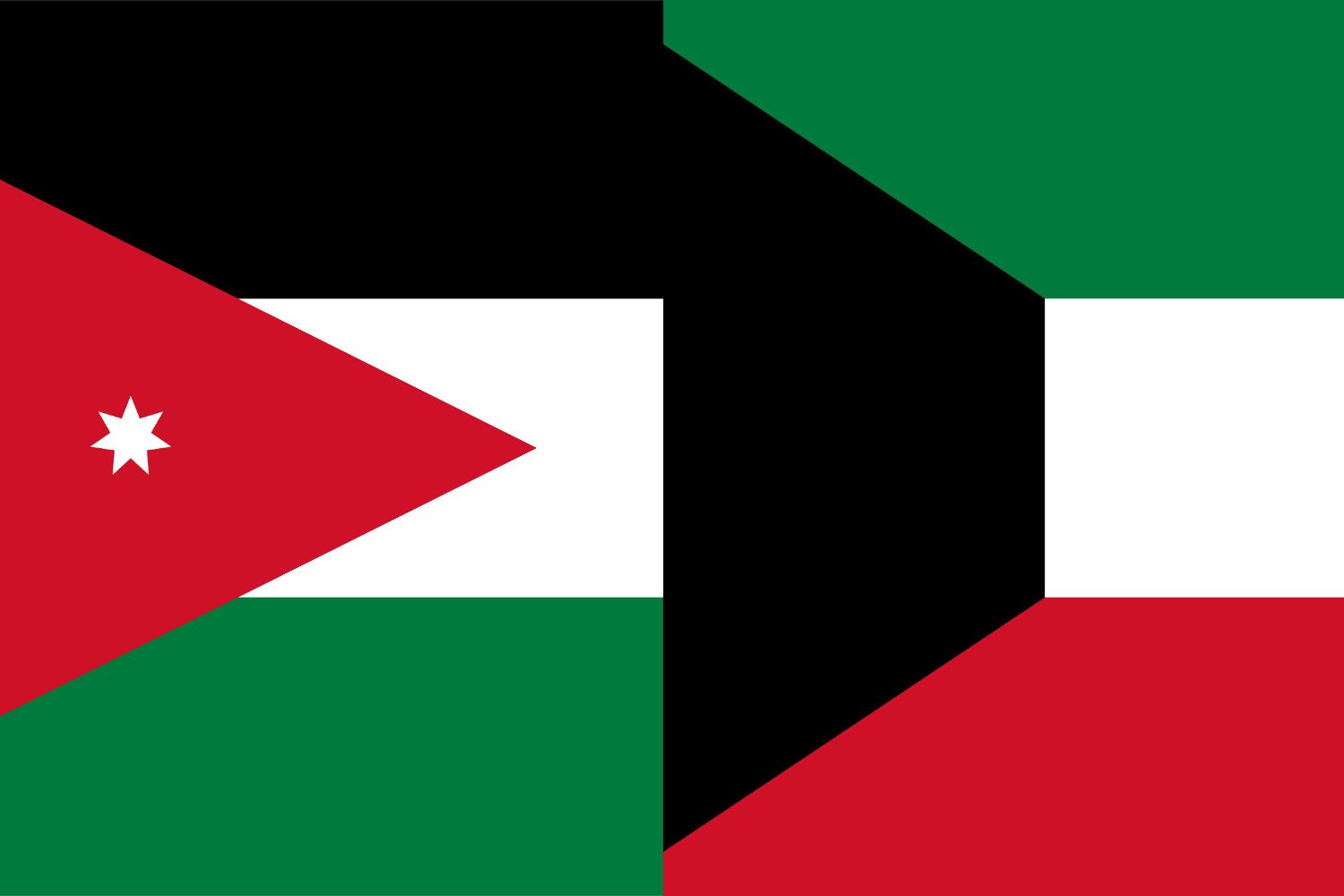
Similarity: Both flags use a combination of black, white, green, and red colors.
Difference: The Kuwaiti flag is divided into four horizontal bands of green, white, red, and black. The Jordanian flag has black, white, and green horizontal stripes with a red triangle on the hoist side containing a white seven-pointed star.
Jordanian Flag vs Saudi Arabian Flag
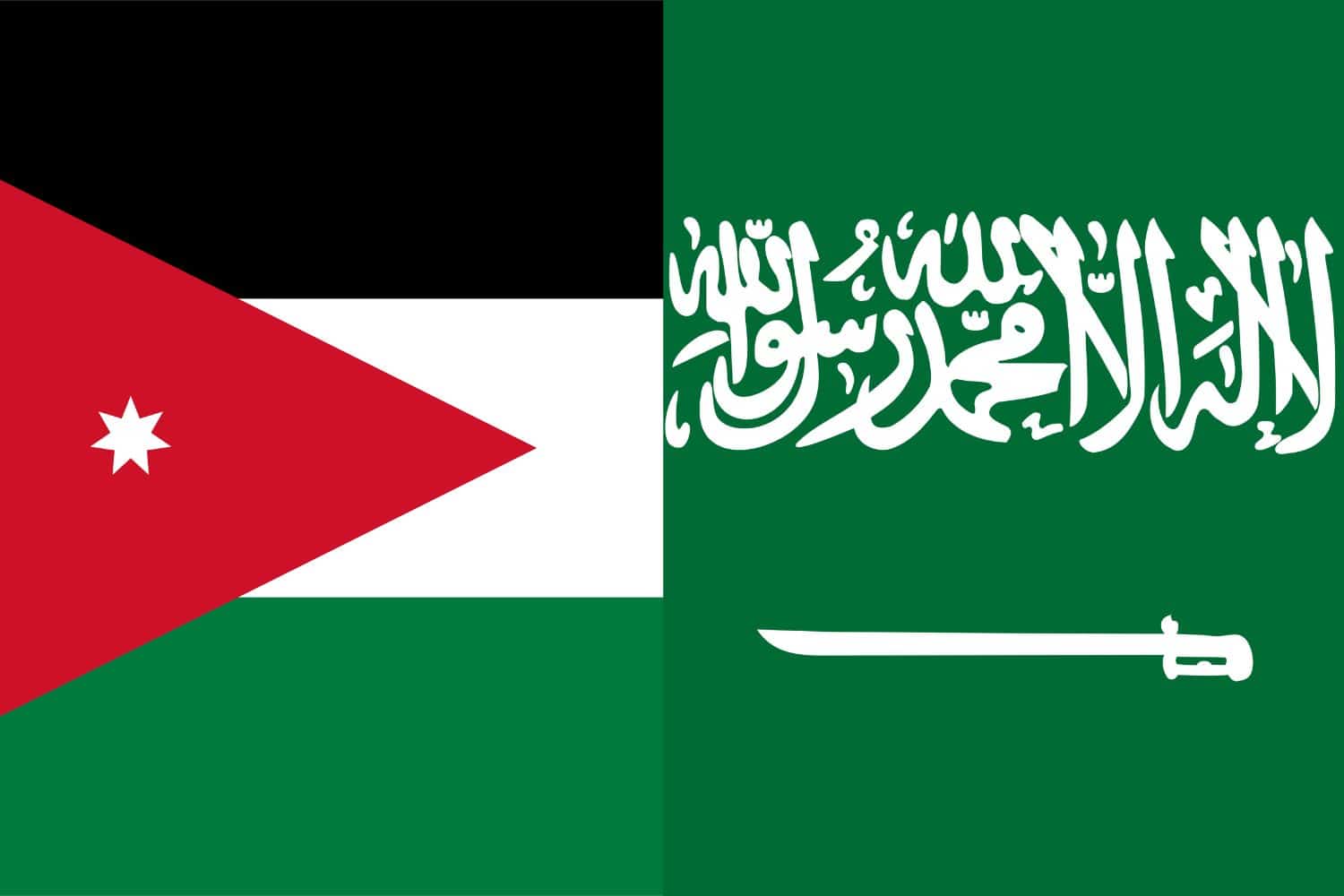
Similarity: Both flags use the colors black, white, and green.
Difference: The Saudi Arabian flag is green with white Arabic calligraphy and a sword, whereas the Jordanian flag has black, white, and green horizontal stripes with a red triangle on the hoist side containing a white seven-pointed star.
Jordanian Flag vs Egyptian Flag
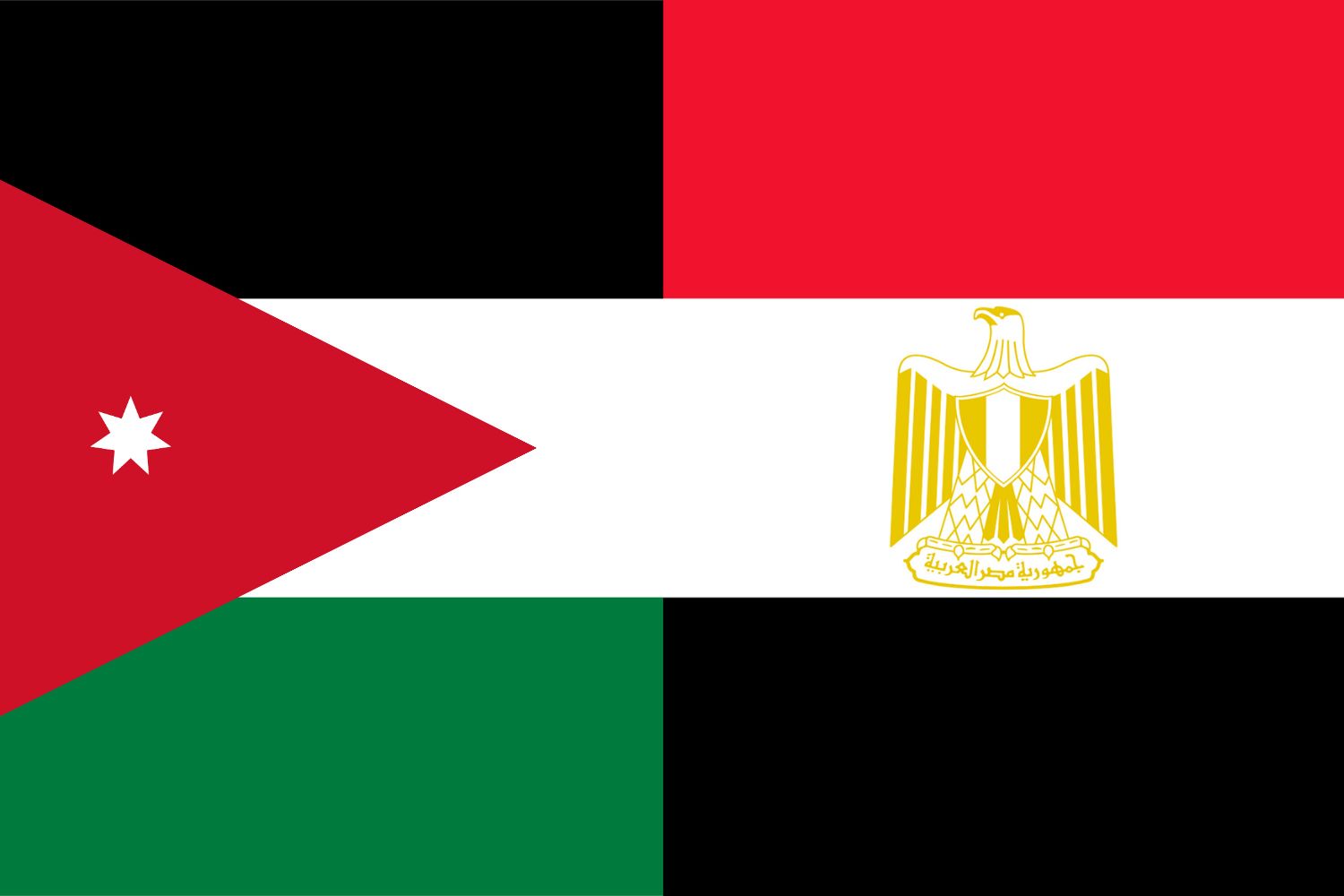
Similarity: Both flags use the colors black, white, and red.
Difference: The Egyptian flag consists of three horizontal stripes with an emblem in the center, while the Jordanian flag has black, white, and green horizontal stripes with a red triangle on the hoist side containing a white seven-pointed star.
Frequently Asked Questions (FAQs)
Discover answers to common questions related to the Jordan flag picture. From its historical origins to the symbolism behind its elements, find concise and informative responses that address inquiries commonly posed by those curious about Jordan’s flag.
What do the colors on the Jordanian flag represent?
The colors on the flag are based on the Pan-Arab colors, representing the Abbasid (black), Umayyad (white), and Fatimid (green) caliphates. The red triangle represents the Hashemite dynasty and the Great Arab Revolt of 1916.
What is the significance of the seven-pointed star on the Jordanian flag?
The seven-pointed star, also known as the Hashemite star, is said to represent the unity of the Arab people. Each point of the star also represents a virtue outlined in King Abdullah I’s vision for the country: humanity, nobility, respect, understanding, knowledge, freedom, and virtue.
When was the Jordanian flag officially adopted?
The flag of Jordan was officially adopted on April 18, 1928, following the country’s formal independence from Ottoman rule.
What was the flag of Jordan influenced by?
The flag is influenced by the flag of the Arab Revolt against the Ottoman Empire during World War I, which featured similar colors and designs to represent Arab unity.
What are the proportions of the Jordanian flag?
The flag has proportions of 1:2, meaning it is twice as long as it is tall. The triangle’s base is equal to one-fourth the length of the flag.
Can the Jordanian flag be displayed vertically?
Yes, when displayed vertically, the black band should be on top, and the green band at the bottom, with the red triangle pointing to the right or to the flag’s head.
What events in history influenced the current design of the Jordanian flag?
The current design was influenced by significant events such as the Great Arab Revolt and the historical representation and governance of Arab dynasties including the Abbasid, Umayyad, and Fatimid dynasties.
Has the flag undergone any changes since it was first adopted?
The fundamental design of the flag has remained unchanged since it was first adopted in 1928, bearing witness to the nation’s long-standing history and the deep-seated principles represented in the flag’s colors and emblem.
What protocol governs the use of the Jordanian flag?
The flag should be treated with respect and dignity as it represents the nation’s sovereignty and identity. It should not be allowed to touch the ground, and it should be raised briskly and lowered ceremoniously. In official settings, it takes precedence over other flags, except in the presence of foreign dignitaries where diplomatic protocols apply.
Can the Jordanian flag be used in commercial or personal settings?
The use of the Jordanian flag in commercial settings requires adherence to the laws and regulations that govern the usage of national symbols to prevent misuse or disrespect. It is generally permitted in personal settings, as long as the usage adheres to the norms of respect and dignity towards the nation’s flag.
More About Jordan
[the-post-grid id=”50380″ title=”Jordan Main page”]
